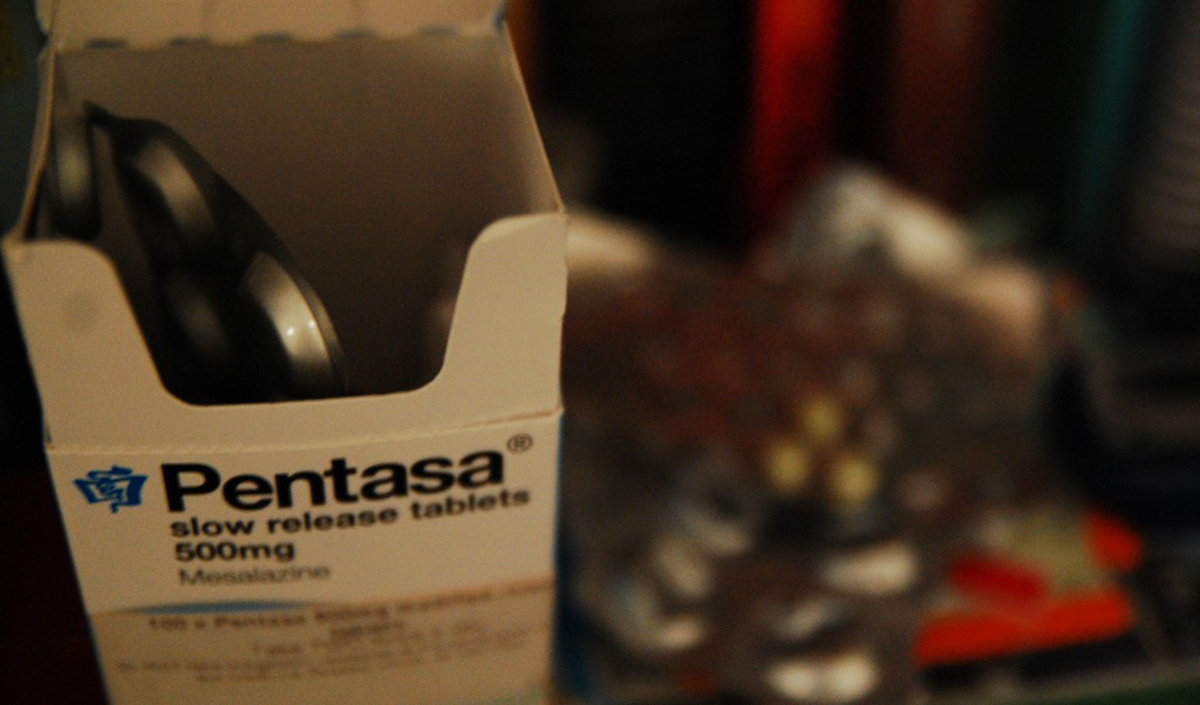Table of Contents
Symptoms of Crohn’s disease and its Diagnosis
The symptoms of Crohn’s disease can differ between patients and may include the following:

- Abdominal pain, often accompanied by diarrhea, with or without blood
- Persistent vomiting and nausea
- Itchiness and pain around the anus, fistulisation or abscesses in the anal area
- Non-healing sores in the mouth.
The disease is characterised by periods of improvement followed by periods when symptoms flare up.
Crohn’s disease may cause a number of systemic symptoms, such as retardation of growth in the children, and the weight loss and diminished appetite in the adult patients.
It can cause inflammation of the interior portion of the eye (uveitis), development of gallstones, rheumatologic diseases (seronegative spondyloarthropathy which manifests itself as inflammation of joints or muscle insertions) and various skin lesions. Crohn’s disease is also associated with increased risk of blood clots and deep vein thrombosis, respiratory problems and anemia, osteoporosis and bone fractures. The risk of neurological complications is also increased in patients with this condition.
Diagnosis of Crohn’s disease can be rather difficult task. The procedures involved usually include biopsy of the bowel wall and various imaging techniques.
Treatment of Crohn’s disease
Unfortunately, like many other rare diseases, Crohn’s disease cannot be cured at present time.
Corticosteroids can be used to improve the condition of newly diagnosed patients. Associated infections and inflammations are treated with antibiotics and anti-inflammatory drugs.
Immunomodulators such as methotrexate and thiopurine are used for the prevention of recurrence. Immunomodulators are compounds that decrease inflammation in tissues by decreasing the activity of body’s immune system. Down-regulating the immune system may increase the chances of bacterial and other infections, but the benefits of symptomatic relief achieved by immunomodulators often overweight the risks associated with possibility of new infections.
Gradual loss of blood that often accompanies the disease may require the use of iron supplementation.
Surgical treatments are sometimes necessary to address more serious complications such as bowel obstructions and abscesses. Surgery does not cure Crohn’s disease. The removal of damaged part of gastrointestinal tract helps to resolve the immediate concerns, but after few months or years disease tend to return back at the new site in the digestive system, usually close to the site of removed damaged region. Around half of all Crohn’s disease patients who undergone surgery experience the return of disease and associated symptoms within 4 years after surgery.
See Also: How To Beat Crohn's Disease
Partially due to the lack of adequate treatments, many patients with Crohn’s disease turn to alternative medicines. Various herbal supplements, probiotics and diet modifications are sometimes recommended to these patients, but the evidences to support their efficiency are limited. The same applies to often used homeopathic approaches and acupuncture.
On the positive note, even though the disease does not have a cure, with adequate and timely symptomatic treatments most people with Crohn’s disease can live long and healthy life and even stay disease-free for many years and decades.
- Baumgart DC, Sandborn WJ (2012) Crohn's disease. The Lancet 380 (9853): 1590–605
- Molodecky, NA, Soon, IS, Rabi, DM, Ghali, WA, Ferris, M, Chernoff, G, Benchimol, EI, Panaccione, R, Ghosh, S, Barkema, HW, Kaplan, GG (Jan 2012) Increasing incidence and prevalence of the inflammatory bowel diseases with time, based on systematic review. Gastroenterology 142 (1): 46–54
- Burisch, J, Munkholm, P (Jul 2013) Inflammatory bowel disease epidemiology. Current opinion in gastroenterology 29 (4): 357–62
- Trikudanathan G, Venkatesh PG, Navaneethan U (2012) Diagnosis and therapeutic management of extra-intestinal manifestations of inflammatory bowel disease. Drugs 72 (18): 2333–49
- Shoda R, Matsueda K, Yamato S, Umeda N (1996) Epidemiologic analysis of Crohn disease in Japan: increased dietary intake of n-6 polyunsaturated fatty acids and animal protein relates to the increased incidence of Crohn disease in Japan. The American journal of clinical nutrition 63 (5): 741–5
- Joos S, Brinkhaus B, Maluche C, Maupai N, Kohnen R, Kraehmer N, Hahn EG, Schuppan D (2004) Acupuncture and moxibustion in the treatment of active Crohn's disease: a randomized controlled study. Digestion 69 (3): 131–9
- Photo courtesy of Holly Lay by Flickr : www.flickr.com/photos/hollylay/14406734266
- Photo courtesy of Jay Springett by Flickr : www.flickr.com/photos/thejaymo/8652317165

